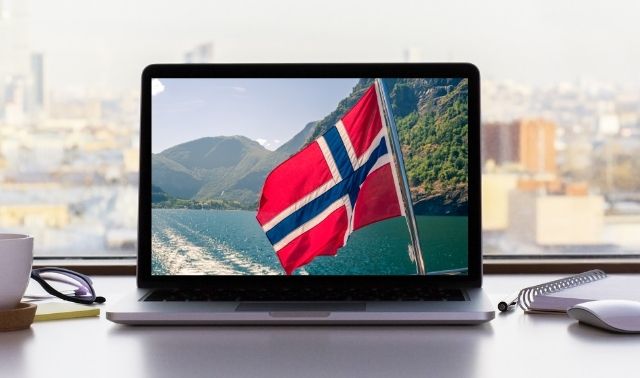NOTE: This article was updated by David Fryxell as of February 2025
Like its Scandinavian cousins, Norway offers some advantages to those among the 4.5 million Norwegian-Americans seeking to research their roots: a state Lutheran church that kept records on all Norwegians beginning in the 1600s, scant wars to destroy those records, extensive emigration logs, and multiple extant censuses. Until recently, Norwegian researchers have also been the envy of those with Danish and Swedish roots because of the wide availability of digitized records online—for free. Although other Scandinavian sites have played catch-up, Norway still excels in the ease of exploring your ancestry in your pajamas.
Newcomers to Norwegian genealogy nonetheless run into some challenges. Some find the patronymic surname system—in which the father’s first name becomes the core of the next generation’s last names—a puzzle. The importance of parishes in Norwegian records’ geography also takes some extra digging. And the Norwegian language uses three “extra” characters—æ, ø and å—alphabetized after z.
Fortunately, most Norwegian genealogy sites have at least a few English-language pages on their front end. You can also find handy language guides and word lists (plus Google Translate) as well as parish maps and wiki entries.
1. National Archives of Norway/Digitalarkivet
The closest thing to one-stop shopping for Norwegian records—and it’s free—is this site from Norway’s National Archives, recently given a front-page makeover. That page and several others are helpfully in English; click “Language” if you’re seeing Norwegian instead. Here you have two main options: “Search for individuals” or “Find source.” Not all records have been indexed, so you’ll want to try both so not to miss those that must be browsed. (“Scanned material” takes you directly to browsing options, including on partner sites.)
Other home-page links highlight some of the digitized records here: censuses (1769 to 1920), parish records, property and law (court records). Don’t miss the “More searches” link, which includes those emigration records of particular interest to US researchers.
Here are some of the most valuable resources on the site:
Parish records
The home page button takes you to a search by life events, such as
born and baptized, confirmation, married, etc. You’ll have better luck if you can narrow your search by parish in the dropdowns under “Geography.” Starting with the “Find source” option instead will also reveal parish records not yet indexed.
Censuses
The digitized censuses are searchable, though not equally useful; those between 1801 and 1865 are incomplete, creating an unfortunate gap during a key period prior to the main wave of emigration. When searching, start by entering only a little information, adding search terms as needed to narrow your hits. Try using an asterisk as a wildcard, especially in surnames (“Sven*” for Svensen, Svenssen, Svensdatter, etc.). Check out the archives’ helpful Emigration records
Police in major coastal towns kept records of emigrants between 1867 and 1930. Many are fully transcribed and/or indexed, and searchable by name. The records give information such as name, gender, year of birth, sometimes place of birth, date of emigration and destination, ship or line. Try “Emigrant protocols” under “More searches,” as well as “Emigration records” under “Find source,” which includes passenger lists and passport records. Similar to city directories, these books are great for locating individuals between census years. Although not many cities are online yet, several years’ worth of books may be available for larger cities. A massive digitization project has put Family History Library microfilm at your fingertips here. FamilySearch now serves up Norwegian church books, baptisms, burials, marriages, probate indexes and the most useful censuses (with images). This multifaceted website also has articles and other features to help you trace your Norwegian roots. Search the Research Wiki for “Norway” to get started, or drill down by searching for an ancestor’s parish if you know it. You’ll also find an extensive list of Norwegian words used in genealogical records, as well as help with reading the Gothic script you’ll encounter. FamilySearch can also help you navigate Norwegian geography, with maps, an explanation of record-keeping jurisdictions, and links to gazetteers. A multi-volume guide to Norwegian farm names (a common geographic feature in Norway that often combined with patronymic surnames) can be found here. (A searchable online version is available, although at this writing the site was offline.) Once you start digging into Norwegian records, FamilySearch can help you decipher early dates that rely on moveable and fixed feast day calendars. This website has especially helpful information for understanding Norwegian names—given names, patronymics, farm names and more. Click on Those Norwegian Names, under Recommended Reading on the left. You’ll also find articles on ships’ voyages, nautical disasters, and searching for passenger lists. Searchable indexes include a growing database of pre-1875 Norwegian emigrants; lists of emigrant ships, agents and shipping lines; and emigrant ship arrivals reported in newspapers around the world (1870–1894). A gallery shows you documents, ports, ships, pioneers, and more images to help you picture your Norwegian ancestors’ lives. Got research questions? Check out the forum for questions about migrants (especially to America). If you’re not careful, the interesting and useful material here may distract you from your research. Another subscription site with a rich collection of Norwegian databases, Ancestry offers a useful alternative if your searches in other sites have come up empty, as its search options might be different. Censuses with indexes and images cover 1801, 1865, 1870, 1875, 1891, 1900 and 1910. Searchable church records, with images, span 1812 to 1938, 41.8 million in all. Emigration records, indexed with images, cover 1867 to 1960. Indexes include births and christenings (1648 to 1903), baptisms (1634 to 1927), marriages (1660 to 1926) and burials (1666 to 1927). Note that Ancestry is also a good source for emigration records from neighboring Sweden, where your Norwegian ancestors might have chosen to depart from Established in 1981 at the Arctic University of Norway and now encompassing the Norwegian Historical Data Centre (NHDC), HistLab aims to ease access to historical sources, primarily censuses (from 1865 on) and parish registers, through computerized processing. The initiative was taken by historians who wanted to study 18th and 19th century society with the aid of microhistorical methods. Ultimately, HistLab seeks to create a national registry of the Norwegian population of the 18th and 19th centuries, mainly for research purposes, but also for the benefit of schools, genealogists and local historians. The site is happily English-friendly. The main page offers three search options. “Easy Search in the Census” lets you enter one or more fields among first name, surname, birthplace and/or farm name. You then select a census year (1865, 1875, 1900, 1910) and, optionally, a province. “Advanced Search in the Census” lets you add multiple search fields, such as family status, occupation, birth year and domicile. “Search in Parish Registers” lets you search by first name, surname, domicile and “from year” as well as by type of parish record, such as baptism or marriage. You then select a parish; note that not all parishes have been transcribed and not all are complete. This colorful site will help you dive deep into your ancestors’ emigration saga, even identifying specific ships’ sailing dates. Databases here cover passenger lists of emigrants (1825 to 1873), emigrant ships (1825 to 1925, by ship name, steamship company, year and agent), and Trond Austheim’s register of arrivals in American ports (1870-1894), as reported in Norwegian newspapers. You might have to resort to browsing, as when we last checked the site’s search function was unavailable due to technical difficulties. Helpful articles cover conditions onboard for emigrants and hunting passenger lists for Canada and US arrivals plus British outbound passenger lists. There’s even a gallery of images of ships, ports, shipyards and more historic scenes. Got research questions? Check out the forum for questions about emigrants (especially to America). A version of this article appeared in the December 2014 issue of Family Tree Magazine. Last updated, February 2025 Since its inception in 1926, this society (Norsk Slektshistorisk Forening in Norwegian, or NSF for short) has published thousands of pages of information on Norwegian genealogy in its scientific journal, Norsk Slektshistorisk Tidsskrift (NST), and its members’ journal, Genealogen. Issues of Genealogen can be accessed online at <genealogi.no/en/de-tidligste-utgavene-av-genealogen-pa-nett/>. You’ll need Google Translate to read much of the site’s content, despite the little US flag in the corner of many pages. Slekt & Historie—the Norwegian form of this site’s name—by Johan Ingvald Borgos (a historian and local history writer) and Marianne Frøydis Pettersen (a genealogist) covers the authors’ personal research as well as general aids to Norwegian genealogy. The home page offers categorized links to more than 100 resources, with a key indicating whether the page is in Norwegian, English or both. Particularly helpful entries include “Tracing Norwegian Immigrants” <www.borgos.nndata.no/migrants.htm>. You’ll discover other gems here, too, so browse around and try the resource links. Be sure to verify everything you discover in additional sources—remember, this is someone’s personal website. You’ll find a number of videos on YouTube to help you pick up Norwegian. Try typing “learn Norwegian” into the search box, then browsing through the snippets. Many videos are under five minutes and completely free, like the series by That Norwegian Guy. If you want to be able to speak Norwegian, this is a small, budget-friendly step in the right direction. (Another free option is Duolingo, whose popular app includes a Norwegian course.) Also try searching for videos with the terms “Norwegian history” and “Norwegian genealogy.” A version of this article appeared in the December 2014 issue of Family Tree Magazine. Last updated: February 2025Address books
2. FamilySearch
3. MyHeritage
4. Ancestry
5. HistLab
6. Norway-Heritage: Hands Across the Sea
7. Norwegian Genealogical Society
8. Ancestry & History
9. YouTube
Related Reads





